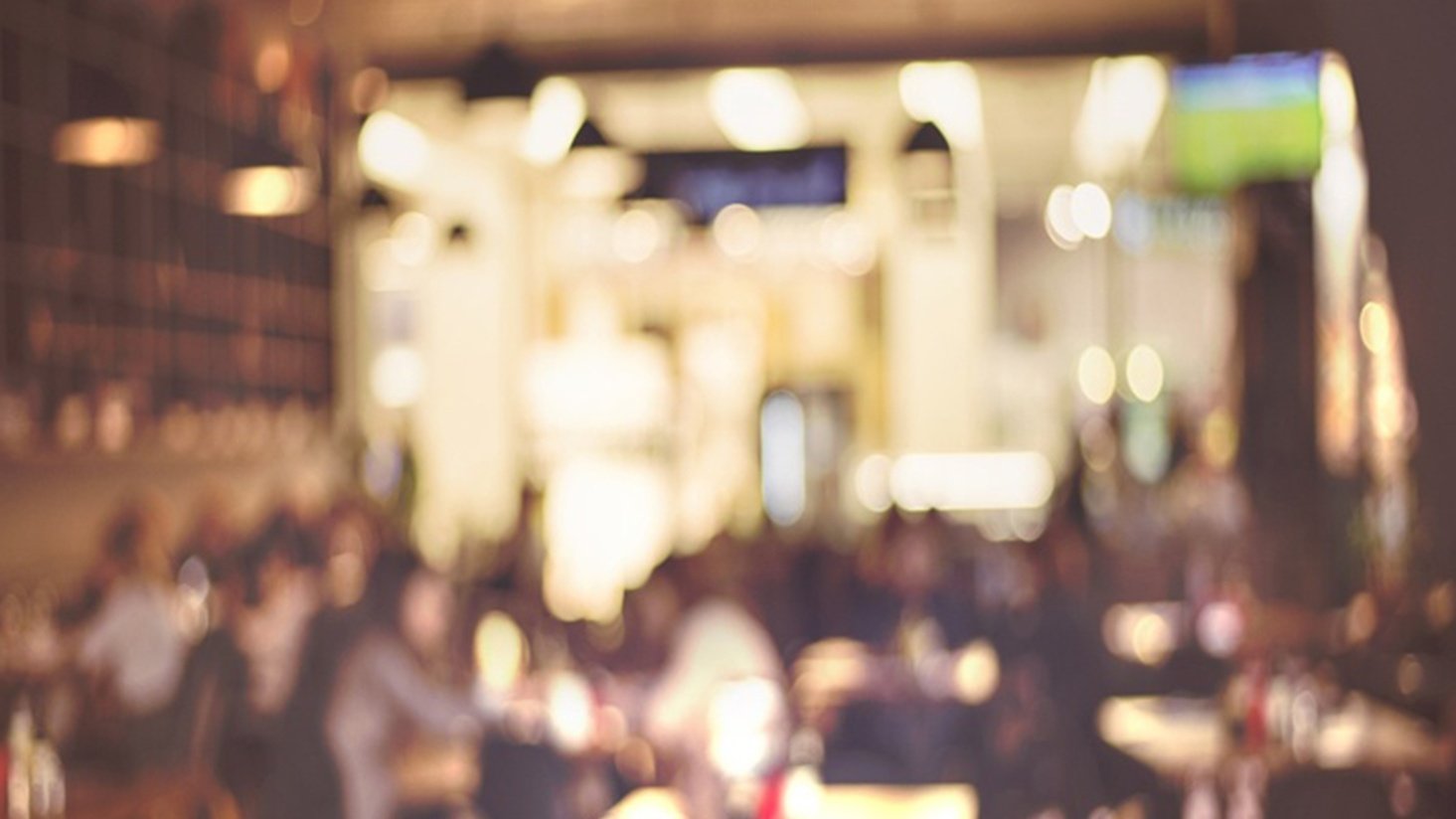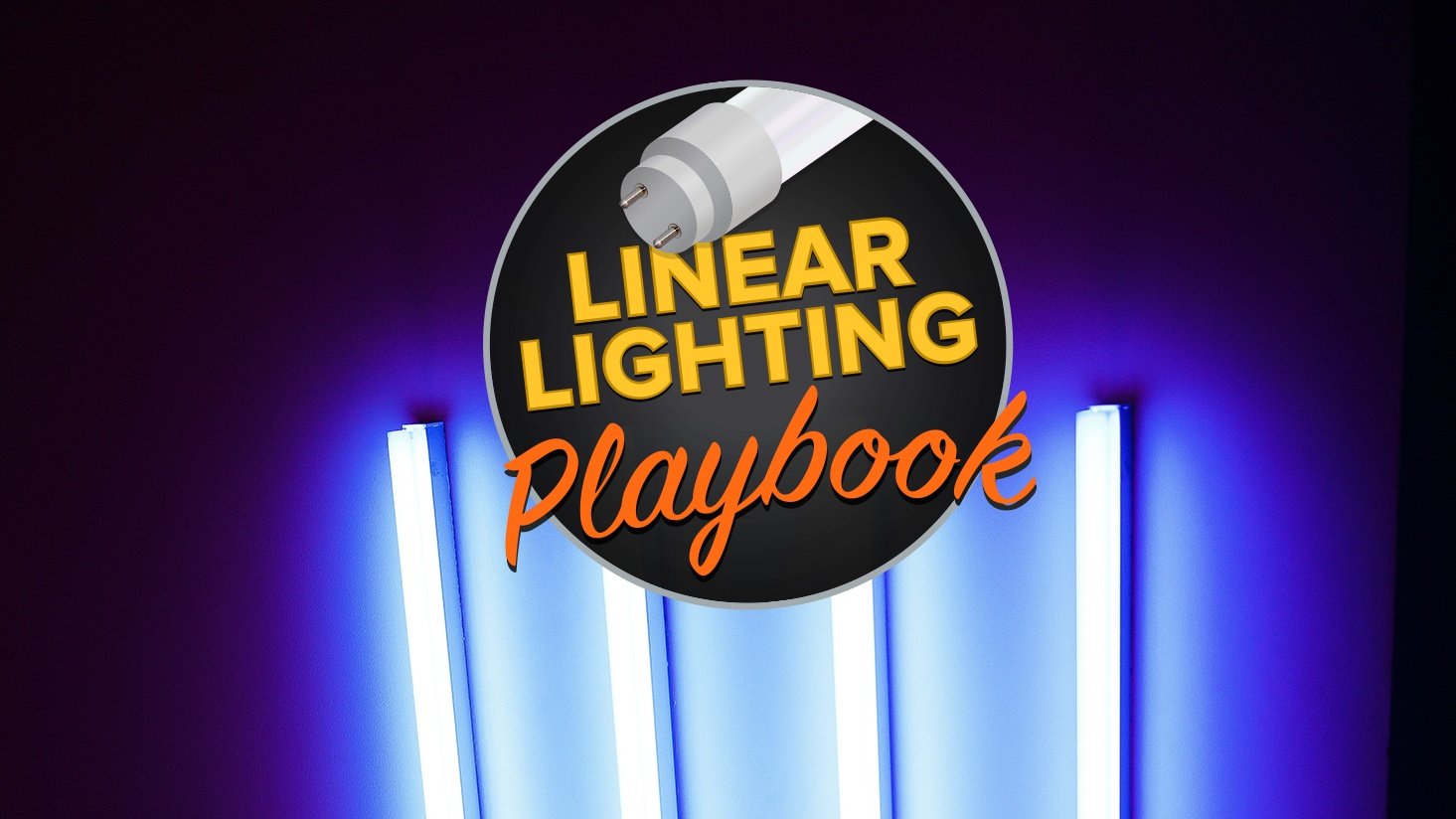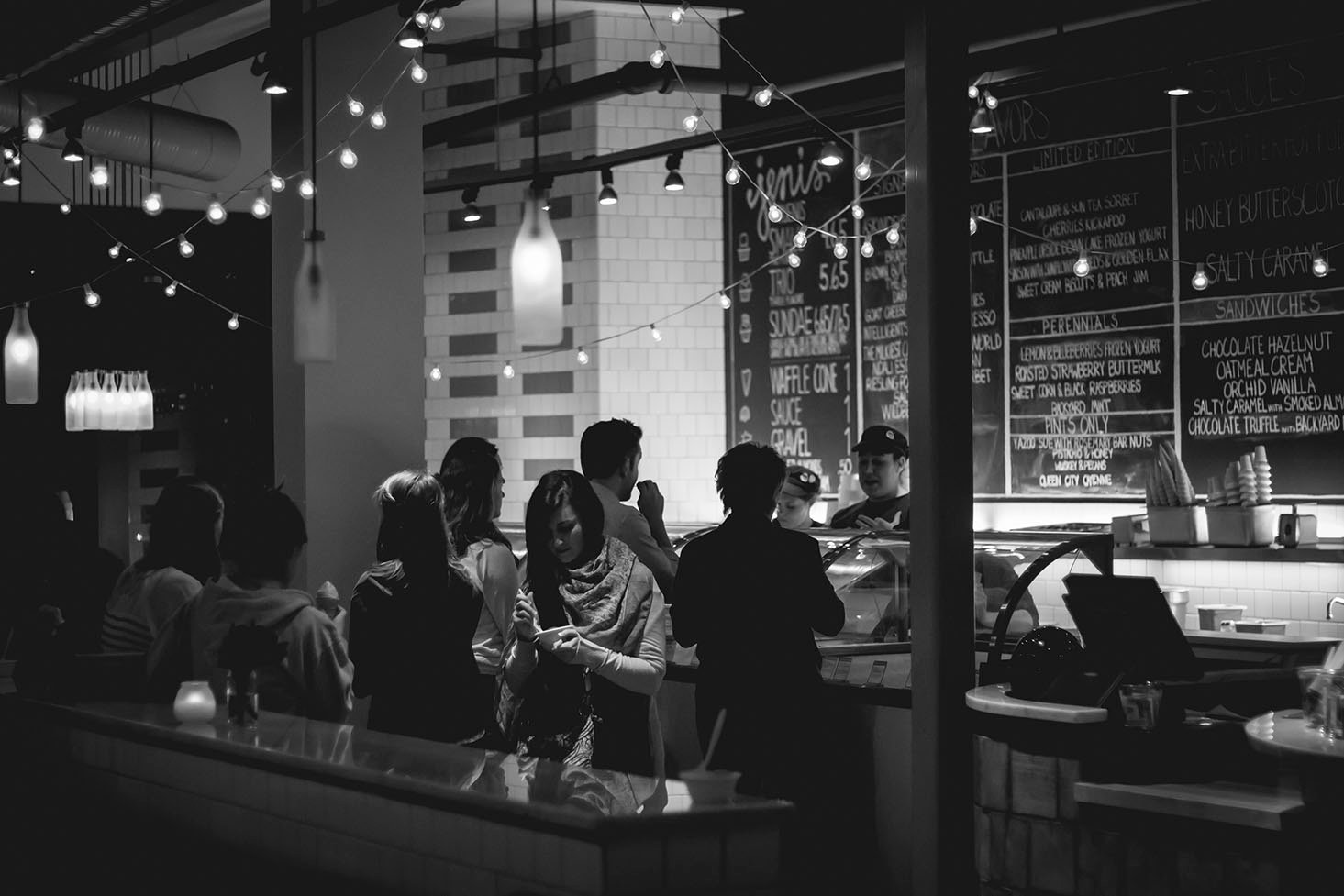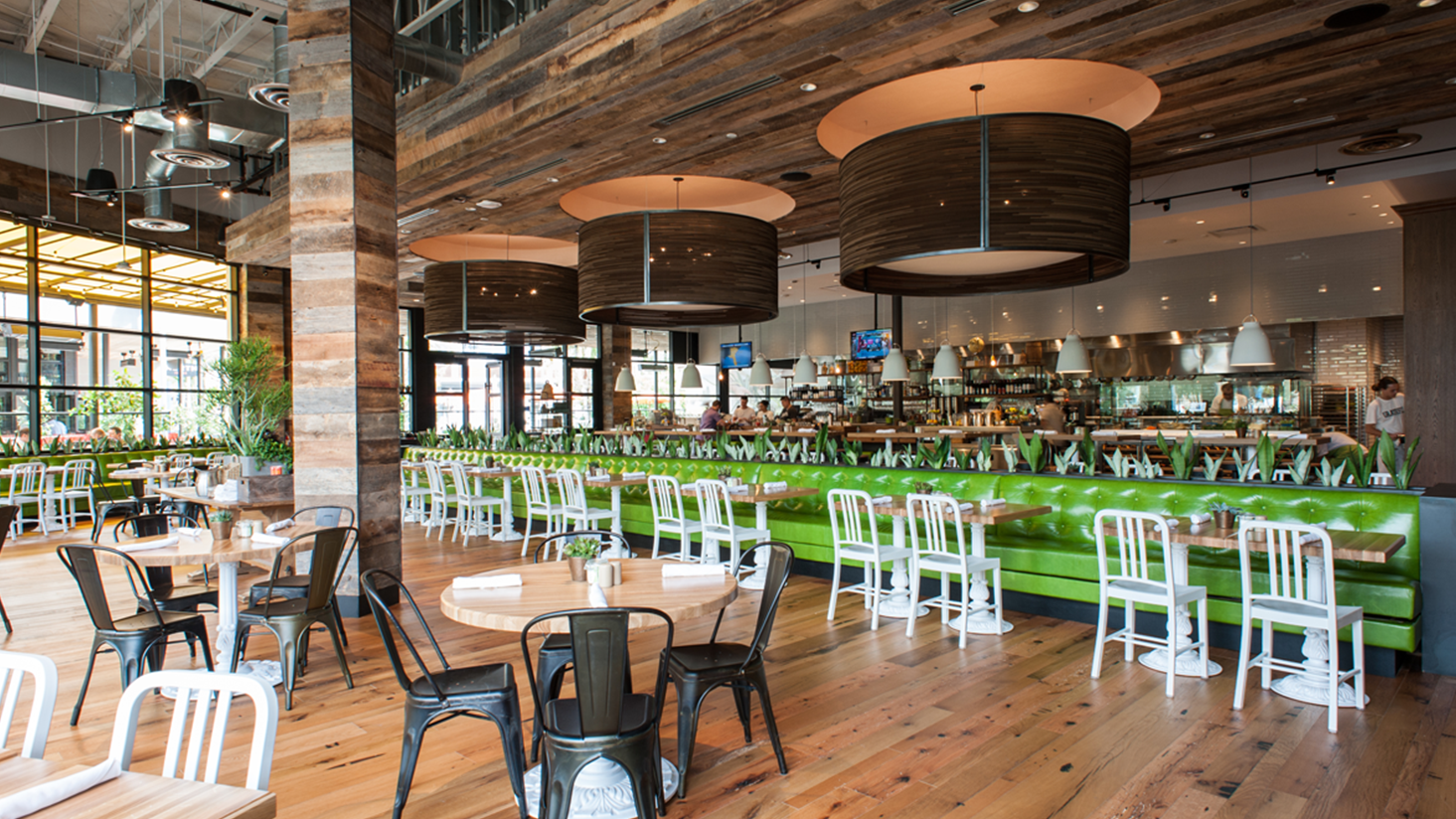Restaurant lighting: The blurred lines between fine dining and fast casual
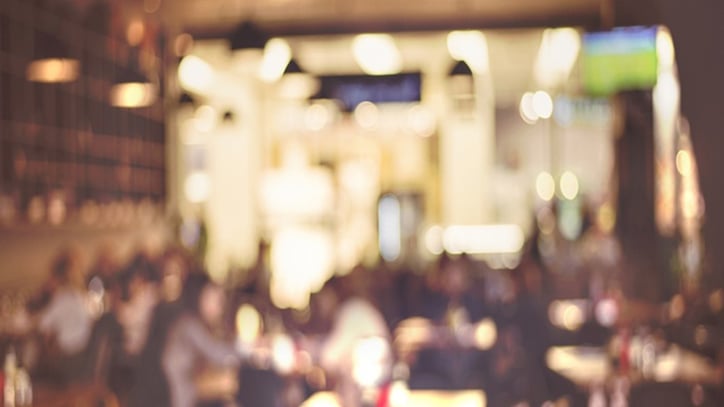
More is not always better in restaurant lighting. We've touched on that before when discussing pitfalls to avoid in restaurant lighting. Regardless of whether you manage a fast casual or fine dining restaurant, your lighting needs to be inviting, warm, friendly, and consistent with your brand to bring your customers in and keep them comfortable so they're likely to return.
But how do you accomplish this perfect mix and put your lighting to work for you? In the past, the answer was generally warm and dim for fine dining and bright and clean for fast food, but the lines between restaurant concepts are more blurred than ever with the growth of fast casual restaurants.
Where did the fast casual dining concept come from?
There's a new generation of diners who don't want to trade nice ambiance for low cost and fast service. They want the best of both worlds. Here's a little background on the genesis of the “fast casual” concept where everybody wants to have their cake and to eat it too.
There were three major shifts in the past two decades that created the emergence of the
1. Consumers realized the need for heathier and more sustainable options
Food quality and preparation at traditional fast food restaurants has come under increasing scrutiny in recent years and been shown to have negative health consequences. This coincided with a general change in consumer attitudes towards a healthy lifestyle created an opportunity to fill the gap with healthier restaurant choices.
Even more recently, consumers – led by the millennial generation – have expressed that they don’t just want healthy options, they want sustainable options too. Studies are showing that today's consumers do take into consideration how sustainable the concept is both in food sourcing and energy consumption when deciding where they will dine.
2. THE RECESSION CAUSED RESTAURANT CHOICES TO CHANGE BUT DINING EXPECTATIONS REMAINED THE SAME
Back in 2007 when the economy dipped, many people who ate at more upscale and fine dining restaurants couldn't afford to keep eating at these establishments so frequently, so they settled for casual dining. Similarly, many people who ate at casual dining restaurants also had to move down a "restaurant notch" but didn't want to go to typical fast food chains.
Those customers with the experience eating at higher end restaurants ended up eating at mid-level restaurants, but they still expected a comfortable atmosphere and good food – just at a lower price-point.
This gap between casual dining and fast food needed to be filled to meet this new budget-conscious, taste-sensitive market. A new category of restaurants began to emerge to provide good quality food at a reasonable price and maintain a more attractive and comfortable atmosphere than a fast food chain. Welcome to the fast casual restaurant.
3. PEOPLE WITH DISPOSABLE INCOME WANT THE SAME RESTAURANT QUALITY BUT FASTER SERVICE
In the past decade, the fast casual restaurant has continued to outgrow any other restaurant segment by double digits. One paradigm shift that has fueled the growth of the fast casual segment is attributed to the increase in
People with the most money to spend often have the least amount of time to spend it.
These consumers still want the quality of food and atmosphere you might expect in more upscale establishments but with fast, efficient service. And if they are spending less time in your restaurant, your space needs to make a greater impact and be more memorable.
The importance of controlling ambiance with restaurant lighting
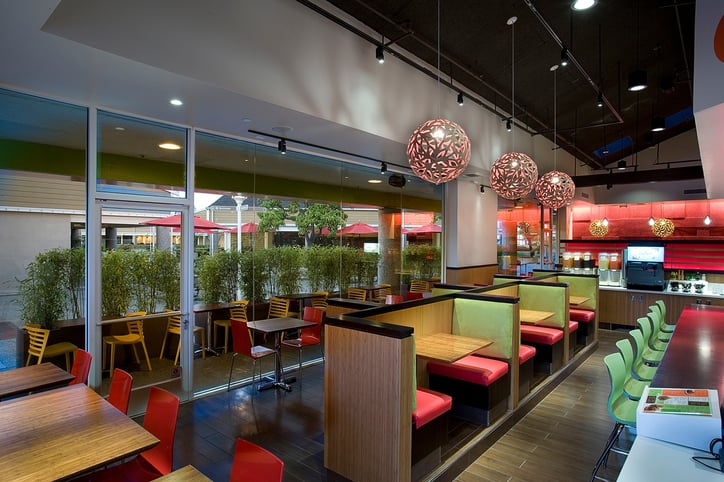
With the blurring of lines between traditional dining options and the emergence of the
There are distinctions to be made between dramatic ambiance and an environment that is too dark for your diners to read their menus. Or a restaurant environment that seems clean and safe but is too bright and makes your diners feel like they are in a sterile hospital or a generic fast food chain with no personality.
So, how do you strike this balance? How do you meet the spectrum of expectations of this new generation of
You've probably spent an enormous amount of time planning your restaurant concept, including the finishes and accents that you design into your space to make the establishment fresh and attractive. You probably have a vision for how you want your guests to feel and interact with
Successful restaurateurs have learned that there is too much at stake to just wing it. The restaurant design community relies on experienced lighting designers who know that pairing the right amount and quality of light that is strategically layered within the space will maximize the impact of the design intent and make a lasting impression.
Proper lighting can be the difference between showcasing the attention to the detail of your restaurant design vs. highlighting the cost-cutting decisions you made along the way. Done correctly, lighting will project your brand’s unique personality in the increasingly crowded
We'd love to hear what your challenges are in the fast casual space. Our priority in lighting is to showcase your brand without breaking the budget.
If you're interested in some specific products that are successful in restaurants, we have listed some recommendations at the bottom of our post, '3 pitfalls to avoid in restaurant lighting.'
